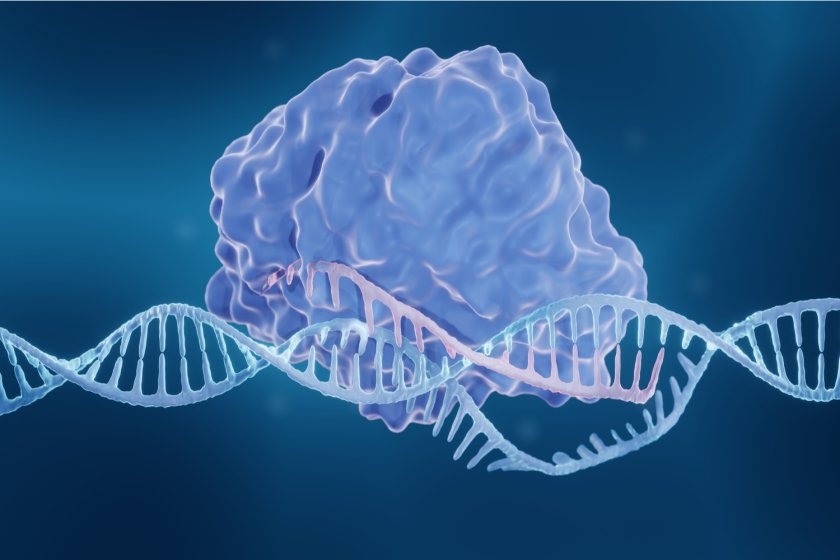
Connecting story
Tiny biomolecules reveal dynamics of life
Molecules are undoubtedly tiny, but some are smaller than others. Making these molecules visible is an enormous challenge. Researchers from the Biomolecular Science Cluster have joined forces to make exciting cutting-edge research possible.
The dynamics of small biomolecules are key to answering big questions, such as how bacteria defend themselves against viral attacks
There are big guys and small guys, even in the world of molecules. While proteins inside cells can be thought of as huge trucks driving through cities, small biomolecules are more like toy cars. The interplay of these toy cars is extremely complex and can easily fly under the radar. Researchers from the Biomolecular Science Cluster are trying to understand how these molecules interact. They are solving fundamental questions in interdisciplinary teams, working on the molecular principles of life and applying new knowledge to improve our quality of life.
The dynamics of small biomolecules are key to answering many big questions. One such question is how bacteria defend themselves against viral attacks, and how we can use these mechanisms for human applications. In emergencies, such as viral attacks, biomolecules can determine the role of whole bacteria. Bacteria can use their CRISPR-Cas system. This system became world-famous as a gene editing tool, but first and foremost, it is a natural, anti-viral defence-mechanism found in bacteria that has more than a single layer of defence.

Bacterial immune system
The CRISPR-system captures a piece of the DNA from each type of virus that enters a bacteria and stores it in a genetic memory bank. During a second attack, bacteria then easily recognises and marks the viral genetical material. Cas proteins – better known as the ‘scissors’ – then cut the virus’s DNA into harmless pieces. Good riddance, you might say. This mechanism for recognising specific sequences of DNA in bacteria is so effective that it is also useful for a variety of applications that require precise gene editing. However, despite its extensive applications for humans, CRISPR-Cas is fundamentally for bacteria, and it is not always sufficient to combat viral infections.
Solving the puzzle together
If a bacteria cannot handle a viral infection anymore and is about to explode, it releases tiny messenger molecules. At WUR, microbiologist Raymond Staals tries to explain this part of the bacterial defence system. “If concentrations of these messenger molecules reach a certain threshold, it can trigger processes that lead to dormancy or even cell death. This can be seen as an altruistic deed to save other bacteria. It is a second layer of defence within the CRISPR-system, which is still not fully understood,” says Staals.
Until recently, Staals could not solve the puzzle of how these subtly different messenger molecules function during immune response and how their composition changes over time. He discussed it with nano scientist Sonja Schmid and, long story short, she founded the NanoDynamicsLab at WUR last year. The Biophysics and Microbiology chair groups have been working together closely since then.
The coolest thing is that we can distinguish different sizes of molecules, even at very small scale
Nanopore technology
Now Schmid applies nanopore technology to discover the size and dynamics of messenger molecules released by CRISPR-proteins during immune responses. A nanopore is like a small gate; only molecules adequately small can fit through. This causes minuscule changes in electric currents, which can be measured in the NanoDynamicsLab. “Even if we don’t know the molecule’s structure for sure, we can try different nanopores and figure out which one works best,” she explains.
Nanopore technology makes it possible to infer the presence of small biomolecules and to count them. “The coolest thing is that we can distinguish different sizes of molecules, even at this very small scale,” Schmid says. “In this way, we can sense the distribution available in a bacterium.” In his research group, Staals builds upon Schmid’s results to solve fundamental questions about the CRISPR-system, and he explores the possibility of repurposing parts of this system for novel applications, such as diagnostics. “Together, we dig into an important pathway and get a more detailed picture,” they conclude.
Since Staals and Schmid collaborate within WUR, they make strides in research much faster
Artificial intelligence
Schmid sought collaboration with the Biomolecular Science Cluster and other parts of WUR. Professor Dick de Ridder’s Bioinformatics group also works on the CRISPR and nanopore research, adding expertise in artificial intelligence. “Their neural networks can tell us more precisely what kinds of molecules we find when we see a certain signal and how certain we can be about the distribution of molecules that we find,” Schmid explains.
Since Staals and Schmid collaborate within WUR, they can make strides in research much faster. “You can just walk up two floors to talk to each other and exchange materials,” Schmid says. “Otherwise we wouldn’t be able to work at this pace.”
